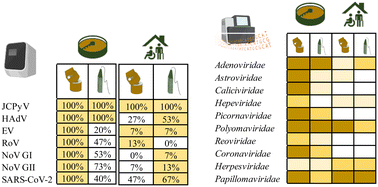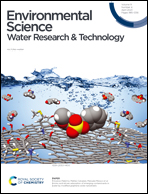Effectiveness of passive sampling for the detection and genetic characterization of human viruses in wastewater†
Abstract
Wastewater-based epidemiology is a promising tool to anticipate potential viral outbreaks not only at city-scale but also at precincts-scale or even buildings. Passive samplers (PS) and, particularly, torpedo-shaped devices containing electronegative membranes, are cost-effective alternatives to traditional sampling methods to trace the circulation of pathogens amongst a community through wastewater. Here we evaluated the effectiveness of torpedo devices to detect eight different viral targets in wastewater from an urban WWTP and from a nursing home (NH), in comparison to 24 h composite active sampling (AS). The use of one or two membranes within the torpedo devices, their potential use for semi-quantification analysis and the performance of torpedoes to conduct studies of the wastewater virome was examined. Two membranes analysis provided more certain results than one single membrane. Considering PS as a semi-quantitative approach, it produced equivalent sensitivity to AS at the NH, but lower sensitivities at the WWTP. Less viral sequences were detected with torpedoes as compared to AS when analyzing the WWTP samples while no differences at the level of viral families detected were obtained at NH when applying both approaches. Our results suggest that PS is a powerful tool for viral detection and characterization at a building scale.

- This article is part of the themed collections: Outstanding Papers 2023 – Environmental Science: Water Research & Technology, Outstanding Papers of 2023 from RSC’s Environmental Science journals and Recent Open Access Articles


 Please wait while we load your content...
Please wait while we load your content...